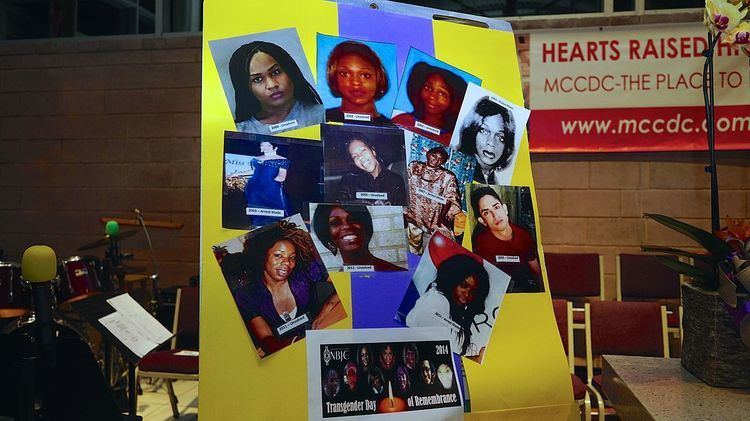Date November 20 First time 1999 | Frequency annual | |
 | ||
Observed by Transgender community and supporters Type international, cultural Related to | ||
Transgender Day of Remembrance, which occurs annually on November 20, is a day to memorialize those who have been murdered as a result of transphobia and to bring attention to the continued violence endured by the transgender community.
The Transgender Day of Remembrance was founded in 1999 by Gwendolyn Ann Smith, a transgender woman, to memorialize the murder of transgender woman Rita Hester in Allston, Massachusetts. Since its inception, TDoR has been held annually on November 20, and it has slowly evolved from the web-based project started by Smith into an international day of action. In 2010, TDoR was observed in over 185 cities throughout more than 20 countries.
Typically, a TDoR memorial includes a reading of the names of those who lost their lives during the previous year, and may include other actions, such as candlelight vigils, art shows, food drives, film screenings, and marches. The Gay & Lesbian Alliance Against Defamation (GLAAD) has extensively covered TDoR. GLAAD has interviewed numerous transgender advocates (including actress Candis Cayne), profiled an event at the New York City LGBT Community Center, and discussed media coverage of TDoR.
Race, TDoR, and Trans Women of Color
While TDoR is a critical event, scholars and activists committed to advancing intersectional approaches to trans politics continue to highlight the importance of seeing transphobic violence as inherently connected to race, gender, and class. This is reflected in the disproportionate instances of violence against trans women of color in general and Black trans women in particular.
Theorists C. Riley Snorton and Jin Haritaworn incisively critique how images and narratives centering on the deaths of trans people of color—most often transfeminine bodies of color—are circulated within social movements and spaces headed by white gay and trans activists, such as TDoR. Reflecting on the case of African American trans woman Tyra Hunter, Snorton and Haritaworn observe the dangers of positioning trans women and transfeminine bodies of color as legible only in the aftermath of their deaths, and failing to see such violence as effects of both systematic transphobia and racism. Resonating alongside (but not limited to) trans activists CeCe McDonald, Reina Gossett, Sylvia Rivera, and Dean Spade, Snorton and Haritaworn's work advocates for the importance of an intersectional approach to events such as TDoR and transgender activism in general.
Scholar Sarah Lamble (2008) argues that TDoR's focus on a collective mourning risks producing the white spectator as innocent of, rather than complicit in, the violence that produces the deaths of trans women of color they are mourning. Lamble states that: "Our task then is to push these further—not only with respect to TDOR but also in the many ways we recount and confront violence. None of us are innocent. We must envision practices of remembrance that situate our own positions within structures of power that authorize violence in the first place. Our task is to move from sympathy to responsibility, from complicity to reflexivity, from witnessing to action. It is not enough to simply honor the memory of the dead—we must transform the practices of the living" (38).
Transgender activist Mirha-Soleil Ross criticizes TDoR for conflating the motivation behind the murders of transgender women sex workers. In an interview with scholar Viviane Namaste, she presents examples of transgender sex workers who were murdered in Toronto for being sex workers and accuses the organizers of TDoR of using these women who died for being sex workers as martyrs of the transgender community.
